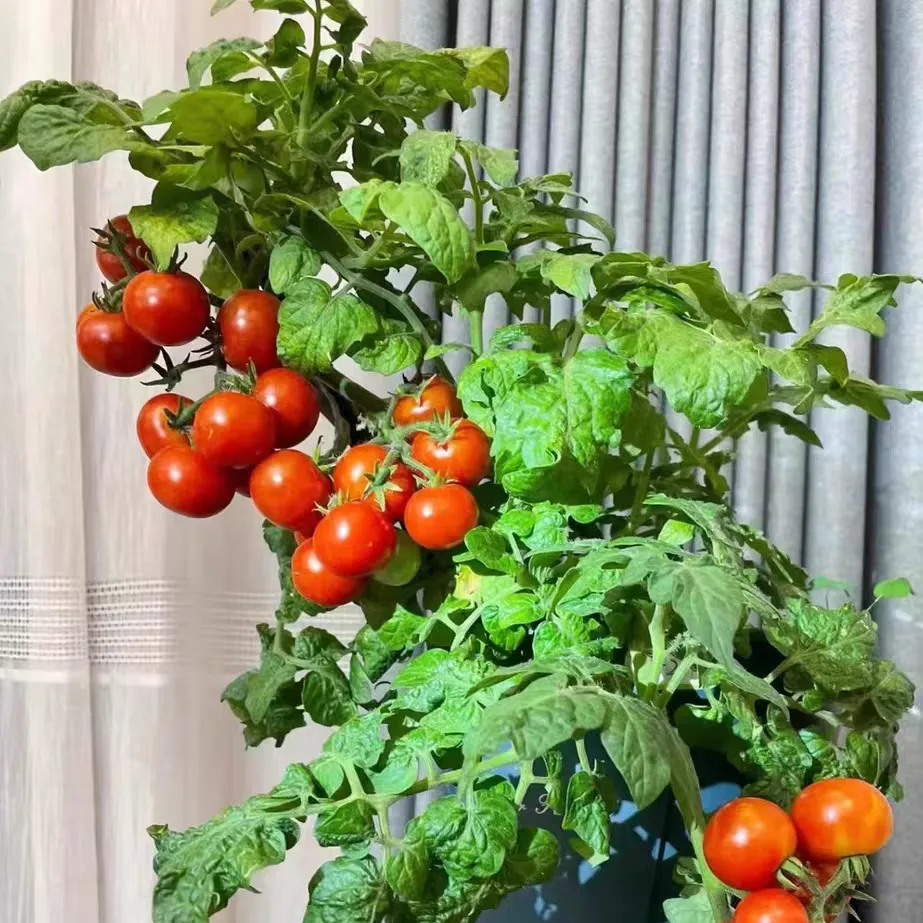The Differences Between Cherry Tomatoes and Saintly Women Tomatoes (Cherry Tomatoes)

Share with
Cherry tomatoes and "Shengnv" tomatoes (a specific type of cherry tomato) both belong to the Solanaceae family and the Lycopersicon genus. Although they are closely related, they exhibit significant differences in appearance, taste, nutrition, and cultivation characteristics. The main distinctions are as follows:
### Appearance
- **Cherry Tomatoes**:
They come in various shapes, with the oval shape being common, and the fruit is slightly elongated. Some varieties are cherry-shaped or jujube-shaped, showing obvious size differences.
- **Shengnv Tomatoes**:
They are predominantly round and plump, with a uniform fruit shape that closely resembles a mini version of large tomatoes.
### Color
- **Cherry Tomatoes**:
They have rich colors, a relatively thick skin texture, and the peel becomes slightly tough when ripe.
- **Shengnv Tomatoes**:
The main color is bright red, with a uniform and translucent luster. The skin is thin, smooth, and soft and easy to peel when ripe.
### Taste
- **Cherry Tomatoes**:
They have a more vegetable-like taste with a noticeable sourness.
- **Shengnv Tomatoes**:
They are sweeter, closer to the taste of fruits.
### Nutrition
- **Cherry Tomatoes**:
They are rich in vitamin C, carotene, and lycopene, offering high nutritional value.
- **Shengnv Tomatoes**:
They are abundant in vitamin C, which is beneficial for skin care.
### Growth Habits
- **Cherry Tomatoes**:
They have strong environmental adaptability, tolerating high temperatures and drought, making them suitable for open-field cultivation. The growth cycle is relatively long, about 100–120 days, with later fruit ripening.
- **Shengnv Tomatoes**:
They prefer warm and humid environments and have high light requirements, making them more suitable for greenhouse cultivation. They grow rapidly, with a growth cycle of about 80–90 days, being early-maturing and having stable yields.
### Cultivation Methods for Cherry Tomatoes
- **Sowing**:
Soak seeds in 50°C warm water for 6 hours. Use small pots with a diameter of 10–12 cm, plant 1 seed per pot in a hole, and cover with 2 cm of soil.
- **Transplanting**:
Transplant when the seedlings have 4–6 true leaves (excluding cotyledons). For indeterminate growth types, use 5-gallon pots.
- **Pest and Disease Control**:
Prevent issues by irrigating the roots with imidacloprid and Bacillus subtilis. Use targeted pesticides if diseases or pests occur.
- **Fertilization**:
- Before flowering: Apply balanced fertilizer + trace elements + calcium fertilizer once.
- During the flowering period: Use potassium dihydrogen phosphate + high-potassium fertilizer.
- After fruiting: Alternate between balanced fertilizer, calcium fertilizer, and potassium fertilizer/potassium dihydrogen phosphate.
- During maturity: Apply high-calcium-magnesium fertilizer once a week, and regularly supplement calcium and trace elements.
- **Blossom End Rot Prevention**:
Avoid uneven dry and wet conditions, water regularly in the morning, and focus on calcium supplementation for long-shaped and large-fruit varieties.
In summary, although cherry tomatoes and Shengnv tomatoes belong to the same category, they each have unique characteristics in multiple aspects.
Tagged in :




Leave a Reply